Dental News Pakistan enters a new digital era with its official mobile App
KARACHI: Dental News Pakistan, has officially gone fully digital with the launch of its mobile application for Android and iOS, marking a major milestone in how dental…

KARACHI: Dental News Pakistan, has officially gone fully digital with the launch of its mobile application for Android and iOS, marking a major milestone in how dental…

Life-saving HIV and cancer drugs can carry serious neurological risks, and new funding will help UMBC researchers discover how these medicines damage the brain – which could help to inform safer treatments.

Important…
The U.S. Bureau of Economic Analysis today updated the personal income and outlays data for the months of July, August, and September 2025 that were first issued on December 5. These updated monthly statistics reflect newly available source data and accompany today’s initial estimate of gross domestic product for the third quarter of 2025, covering the same period.
The updated data tables are available as an Excel spreadsheet in the Related Materials tab; in BEA’s interactive data tables (National Income and Products Accounts Section 2); and in BEA’s API. The information published in the Personal Income and Outlays, September 2025, news release of December 5 is superseded; that news release has been archived and its text will not be updated.
BEA continues working to update its schedule of economic releases, which was affected by the government shutdown. We will publish updated release dates as soon as they are available. Check our website for this information.

Taylor Swift and Travis Kelce had their first Thanksgiving together last year. In the fifth episode of “The End of an Era” docuseries, the singer asked her mom, Andrea Swift, to make “those big ribs” for her fiancé. The mother-daughter…

Bristol Hippodrome from 15 March
I’ll be turning my attention outside of London for what promises to be among the theatrical events of the year, a brand-new Disney musical premiering in the UK, the likes of which we haven’t seen since Mary…
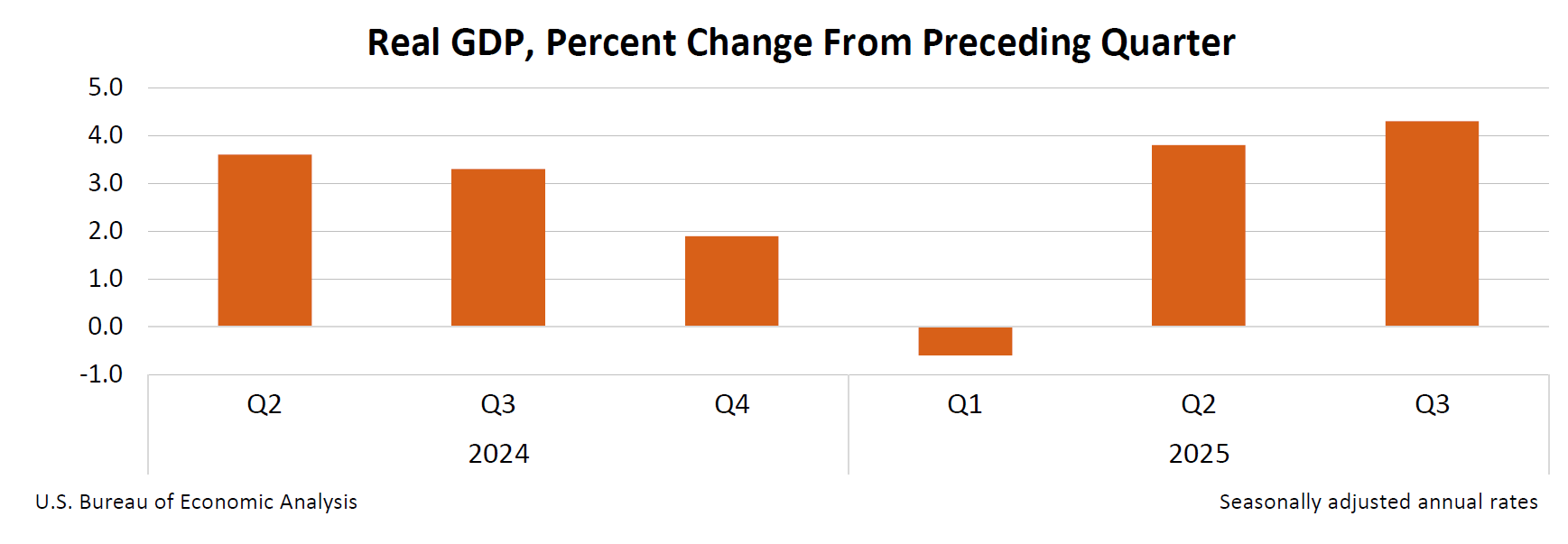
Real gross domestic product (GDP) increased at an annual rate of 4.3 percent in the third quarter of 2025 (July, August, and September), according to the initial estimate released by the U.S. Bureau of Economic Analysis. In the second quarter, real GDP increased 3.8 percent.
Due to the recent government shutdown, this initial report for the third quarter of 2025 replaces the release of the advance estimate originally scheduled for October 30 and the second estimate originally scheduled for November 26.
The increase in real GDP in the third quarter reflected increases in consumer spending, exports, and government spending that were partly offset by a decrease in investment. Imports, which are a subtraction in the calculation of GDP, decreased. For more information, refer to the “Technical Notes” below.
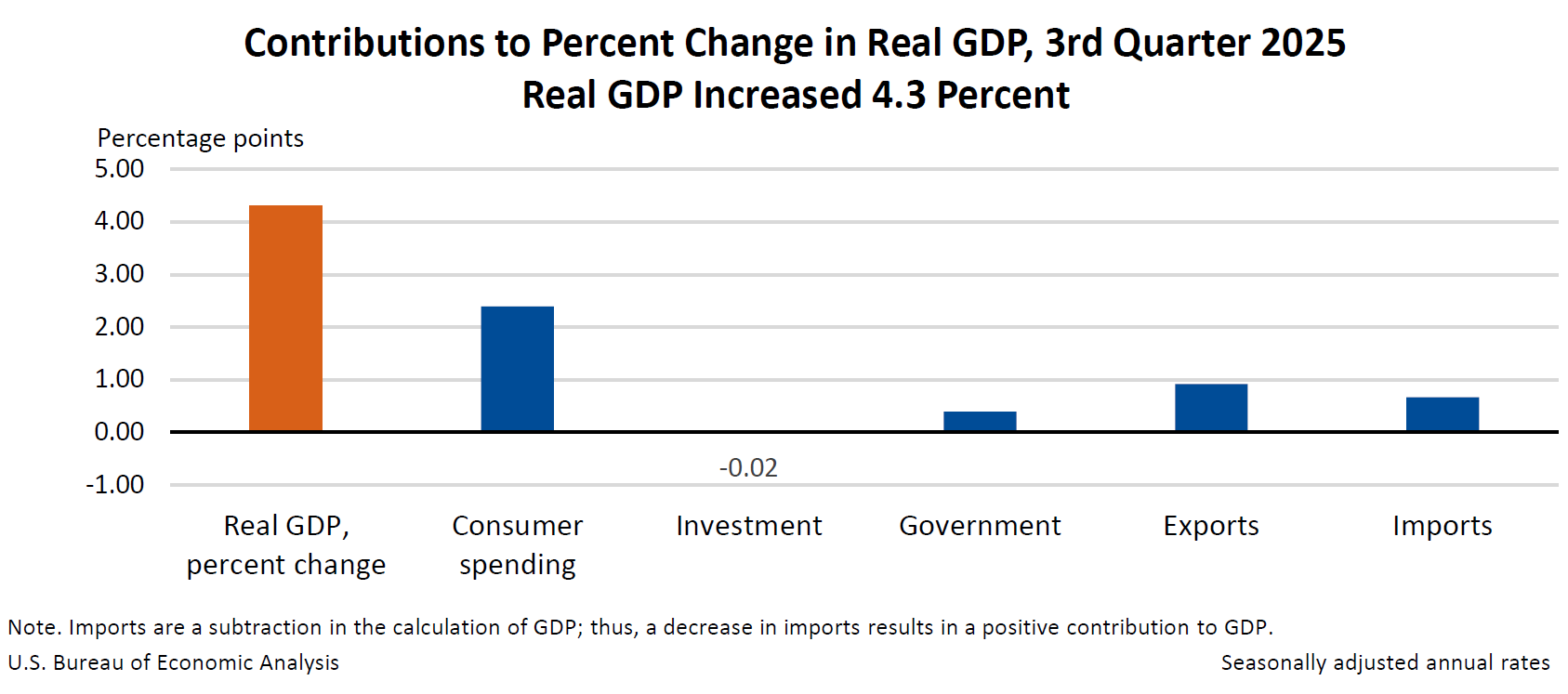
Compared to the second quarter, the acceleration in real GDP in the third quarter reflected a smaller decrease in investment, an acceleration in consumer spending, and upturns in exports and government spending. Imports decreased less in the third quarter.
Real final sales to private domestic purchasers, the sum of consumer spending and gross private fixed investment, increased 3.0 percent in the third quarter, compared with an increase of 2.9 percent in the second quarter.
The price index for gross domestic purchases increased 3.4 percent in the third quarter, compared with an increase of 2.0 percent in the second quarter. The personal consumption expenditures (PCE) price index increased 2.8 percent, compared with an increase of 2.1 percent. Excluding food and energy prices, the PCE price index increased 2.9 percent, compared with an increase of 2.6 percent.
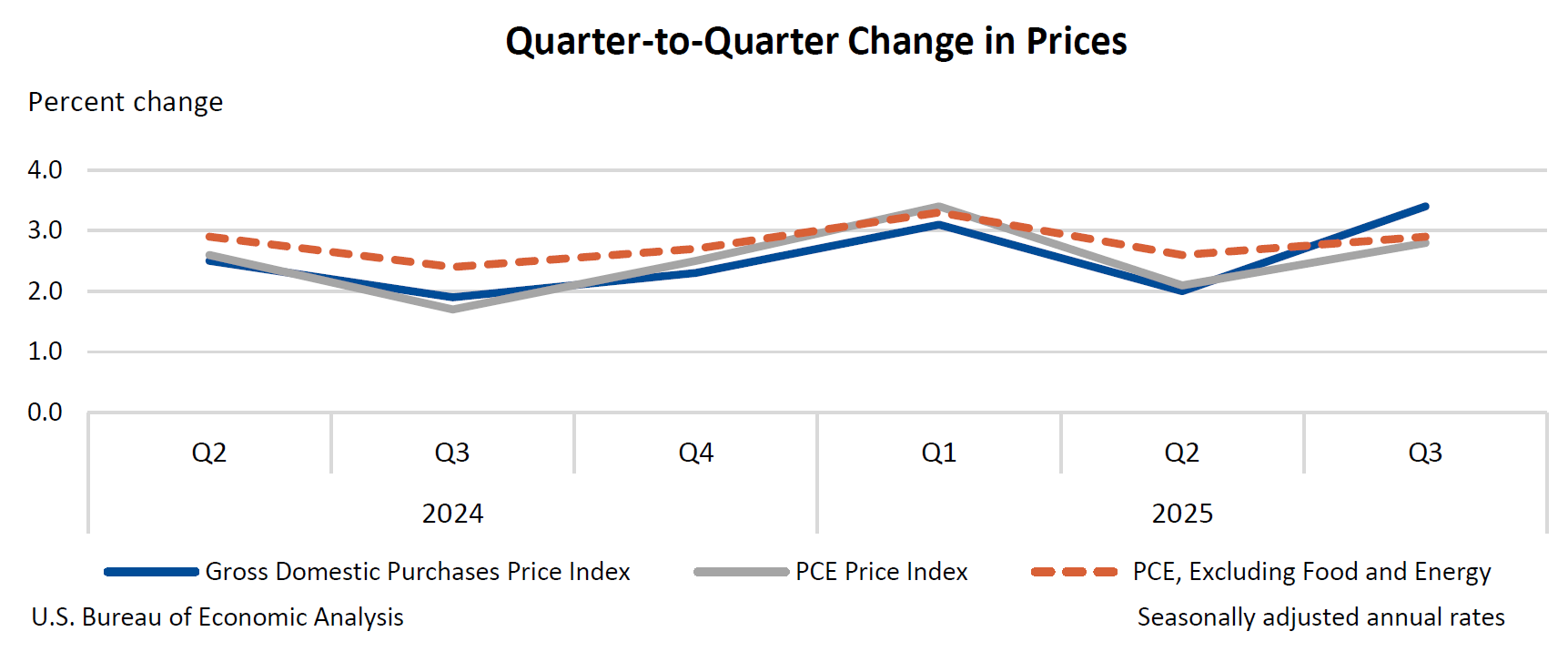
Real gross domestic income (GDI) increased 2.4 percent in the third quarter, compared with an increase of 2.6 percent (revised) in the second quarter. The average of real GDP and real GDI increased 3.4 percent in the third quarter, compared with an increase of 3.2 percent (revised) in the second quarter.
Profits from current production (corporate profits with inventory valuation and capital consumption adjustments) increased $166.1 billion in the third quarter, compared with an increase of $6.8 billion in the second quarter.
| Real GDP and Related Measures | |||
|---|---|---|---|
| [Percent change from 2025 Q2 to Q3] | |||
| Initial Estimate | |||
| Real GDP | 4.3 | ||
| Current-dollar GDP | 8.2 | ||
| Real final sales to private domestic purchasers | 3.0 | ||
| Real GDI | 2.4 | ||
| Average of Real GDP and Real GDI | 3.4 | ||
| Gross domestic purchases price index | 3.4 | ||
| PCE price index | 2.8 | ||
| PCE price index excluding food and energy | 2.9 | ||
Today’s release includes updated monthly data for April through September for personal income as well as updated monthly data for July through September for personal outlays and consumer spending. The updated statistics, reflecting newly available source data, are available in BEA’s iTables and API.
* * *
Next release: January 22, 2026, at 8:30 a.m. EST
Gross Domestic Product, 3rd Quarter 2025 (Updated Estimate),
GDP by Industry, and Corporate Profits (Revised)
* * *
The federal government shutdown that occurred in October and November resulted in delays in many of the principal source data that are used to produce estimates of GDP. This initial estimate of GDP for the third quarter of 2025 reflects a combination of data and methods that are typically used for the advance and second current quarterly estimates. More information on the source data and BEA assumptions that underlie the third-quarter estimate is shown in the key source data and assumptions table.
Real GDP increased at an annual rate of 4.3 percent (1.1 percent at a quarterly rate1) in the third quarter, reflecting increases in consumer spending, exports, and government spending that were partly offset by a decrease in investment. Imports, which are a subtraction in the calculation of GDP, decreased.
Estimates of corporate profits were reduced by several settlements that were finalized in the third quarter. Settlements are recorded in the National Income and Product Accounts (NIPAs) on an accrual basis in the quarter when the settlement is finalized, regardless of when they are recorded on a company’s financial statement. Notably, in the third quarter:
The estimate of GDI was not impacted because these settlements were recorded in the NIPAs as business current transfer payments, which offset the reduction to corporate profits.

Scientists have created the most comprehensive map to date of telomere biology across hundreds of cancer cell lines, opening new possibilities for therapies that target one of cancer’s defining features: limitless replication.
Researchers…
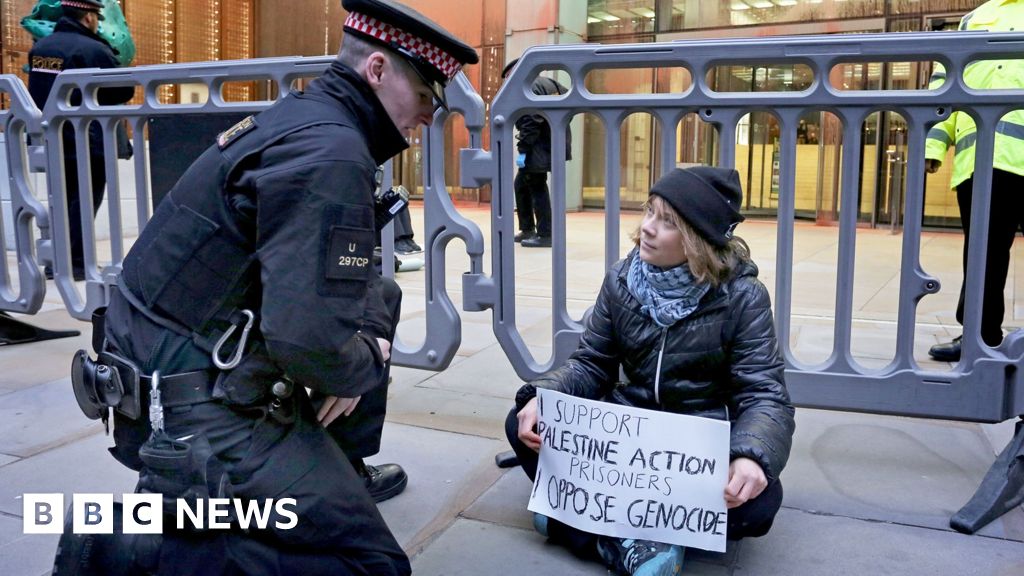
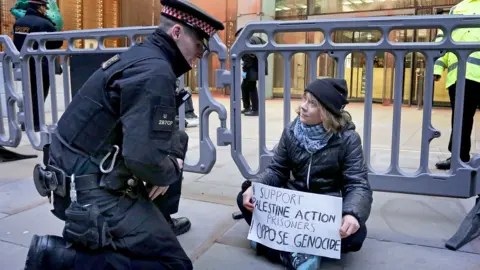 PA Media
PA MediaGreta Thunberg has been arrested at a demonstration in support of the Palestine Action protesters who are on hunger strike in prison, according to the Prisoners for…
The Pakistan Stock Exchange (PSX) experienced a largely range-bound session on Tuesday, as investor caution kept the benchmark KSE-100 Index trading within a narrow band. The session opened on a positive note, but after midday, the market saw a gradual decline as profit-taking and cautious trading set in. The KSE-100 Index closed at 171,073.73, down by 130.44 points or 0.08%.
Investor attention was focused on the ongoing bidding process for a 75% stake in Pakistan International Airlines (PIA), with three consortia submitting sealed bids to take control of the national carrier. On the previous day, the market had already faced pressure as the roll-over week dampened investor sentiment, resulting in a volatile session where the KSE-100 Index dropped by 200.31 points, or 0.12%, to settle at 171,204.18 points.

One hundred
Straight
Games with
At least 20.
SGA joins Wilt with 100 consecutive 20+ point games – with two straight vs. the Spurs up next:

Rivals Run It Back: Why tonight’s Spurs-Thunder showdown is…